Aluminum 90 Degree Elbow
As a crucial pipe fitting, the 90-degree aluminum elbow is widely used in marine vessels, construction, automotive, chemical industries, and more due to its advantages such as lightweight, high strength, corrosion resistance, and ease of processing. With continuous advancements in materials science and manufacturing technology, the performance of aluminum elbows will further improve, and their application scope will continue to expand.
The 90-degree aluminum elbow is widely used in various ship systems including water supply and drainage, cooling systems, fire-fighting systems, and other fluid transport pipelines. It serves as a key fitting for connecting straight pipe sections. In shipbuilding, precisely designed angles (such as 90 degrees) can effectively optimize pipe layout, improve space utilization, and ensure smooth fluid flow.
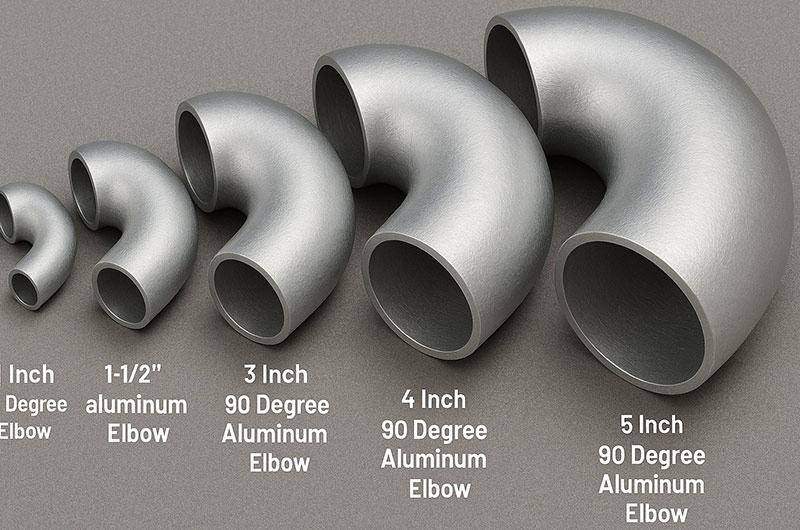
Haomei Aluminum’s marine-grade 90-degree aluminum elbow products are certified by multiple international classification societies (DNV/ABS/CCS/BV), ensuring they meet the stringent requirements of shipbuilding and marine engineering. We offer aluminum elbows in the following specifications:
Nominal Diameter
The nominal diameter range of marine-grade 90-degree aluminum elbows is wide, typically from DN15 (1/2 inch) to DN700 (28 inches). Common nominal diameters include DN20, DN25, DN32, DN40, DN50, DN65, DN80, DN100, DN125, DN150, DN200, etc.
Bending Radius
According to application needs, marine-grade 90-degree aluminum elbows generally have two types of bending radii:
- Long radius elbow: bending radius is 1.5 times the nominal diameter (1.5D)
- Short radius elbow: bending radius is equal to the nominal diameter (1D)
Long radius elbows (LR) are more commonly used in ship piping systems because they reduce fluid resistance and pressure loss, making them especially suitable for high-speed fluid or fluids containing solid particles.
Common Wall Thickness Range
The wall thickness of aluminum 90-degree elbows varies depending on the pipe diameter and application pressure. Common standard wall thickness series include Sch10, Sch20, Sch30, Sch40, etc.
The size, diameter, and wall thickness range of aluminum 90-degree elbows are usually determined according to relevant standards and application requirements. Understanding these dimensional parameters helps in selecting the right elbow for specific applications.
-
1 Inch 90 Degree Aluminum Elbow
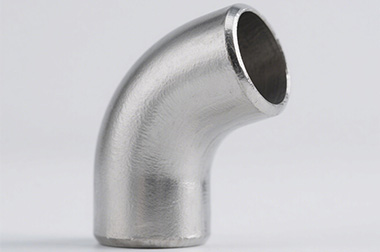
-
1-1/2" aluminum 90 degree elbow
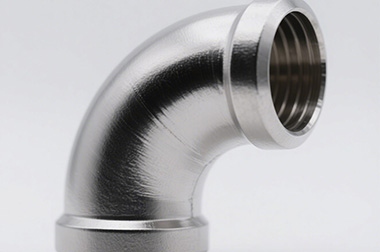
-
2 Inch 90 Degree Aluminum Elbow
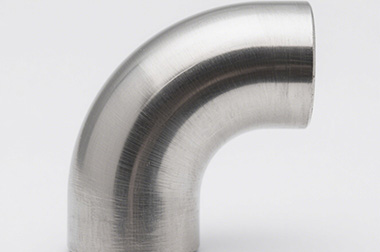
-
3 Inch 90 Degree Aluminum Elbow
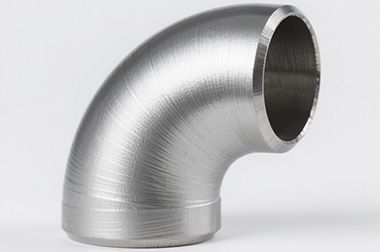
-
4 Inch 90 Degree Aluminum Elbow
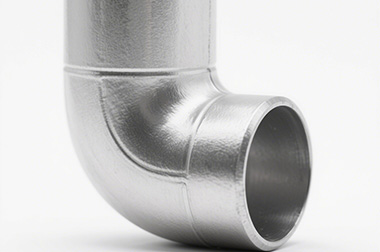
-
5 Inch 90 Degree Aluminum Elbow
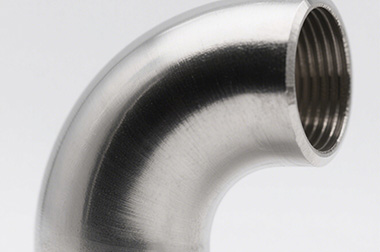
Principles for Selecting Size and Wall Thickness
When selecting the size and wall thickness of a 90-degree aluminum elbow, factors such as application pressure, fluid characteristics, installation space, and system requirements should be considered. For example, in high-pressure systems, elbows with Sch80 or higher wall thickness should be selected; while for low-pressure or decorative applications, Sch10 or Sch20 elbows may be sufficient.
With the growing demand across industries for lightweight, corrosion-resistant, and high-strength piping systems, aluminum 90-degree elbows will play an increasingly important role in future engineering applications. Selecting the appropriate aluminum elbow requires comprehensive consideration of the application environment, operating conditions, and system requirements to ensure its performance and reliability meet actual needs.
Selection of Aluminum Alloy for Marine 90 Degree Elbow
Main Alloy Types and Characteristics of Marine 90 Degree Aluminum Elbow
Marine-grade 90-degree aluminum elbows are mainly made from two types of aluminum alloys: the 5083 series and the 6061 series. These alloys are ideal choices for marine environments due to their unique chemical compositions and performance characteristics.
- Marine 90 Degree 5083 Aluminum Elbow The 5083 aluminum alloy is one of the most commonly used alloys in marine engineering, primarily due to its excellent seawater corrosion resistance. Compared to other aluminum alloys, 5083 shows an extremely low corrosion rate in marine environments, which means a long service life and low maintenance costs.
- Marine 90 Degree 6061 Aluminum Elbow The 6061 aluminum alloy offers high strength and hardness while maintaining good machinability. In the T6 heat-treated condition (6061-T6), it demonstrates optimal mechanical properties, making it suitable for applications requiring high strength and resistance to deformation.
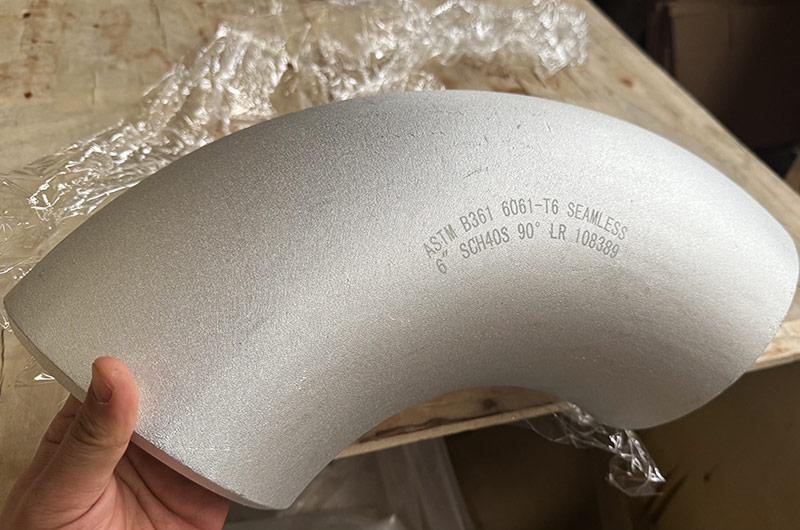
Chemical Composition of Marine 90 Degree Aluminum Elbow
Chemical Composition of 5083 Aluminum Alloy (by weight percentage)
| Element | Mg | Mn | Si | Fe | Cu | Zn | Ti | Cr | Al |
| Content (wt.%) | 4.0–4.9 | 0.4–1.0 | ≤0.40 | ≤0.40 | ≤0.10 | ≤0.25 | ≤0.15 | 0.05–0.25 | Remainder |
Chemical Composition of 6061 Aluminum Alloy (by weight percentage)
| Element | Si | Fe | Cu | Mn | Mg | Cr | Zn | Ti | Al |
| Content (wt.%) | 0.4–0.8 | ≤0.7 | 0.15–0.40 | ≤0.15 | 0.8–1.2 | 0.04–0.35 | ≤0.25 | ≤0.15 | Remainder |
Material Tempers of Marine 90 Degree Aluminum Elbow
Common Tempers and Performance Characteristics of 5083 Aluminum Alloy
| Temper | Description and Performance Optimization |
| H116 | Specially processed for marine environments, featuring excellent corrosion resistance, especially suitable for underwater marine conditions. |
| H321 | Similar to H116, undergoes a stabilization heat treatment process, enhancing corrosion resistance in seawater; suitable for long-term immersion environments. |
| H111 / H112 | Basically work-hardened tempers without additional thermal stabilization. Corrosion resistance is lower than H116 and H321. In comparison, H116 and H321 significantly outperform H111 and H112. |
Common Tempers and Performance Characteristics of 6061 Aluminum Alloy
| Temper | Description and Performance Optimization |
| T6 | Obtained through solution heat treatment and artificial aging. This temper offers a good balance of high strength and toughness, along with excellent machinability, weldability, plating ability, and corrosion resistance. The material remains stable and free from deformation after processing. |
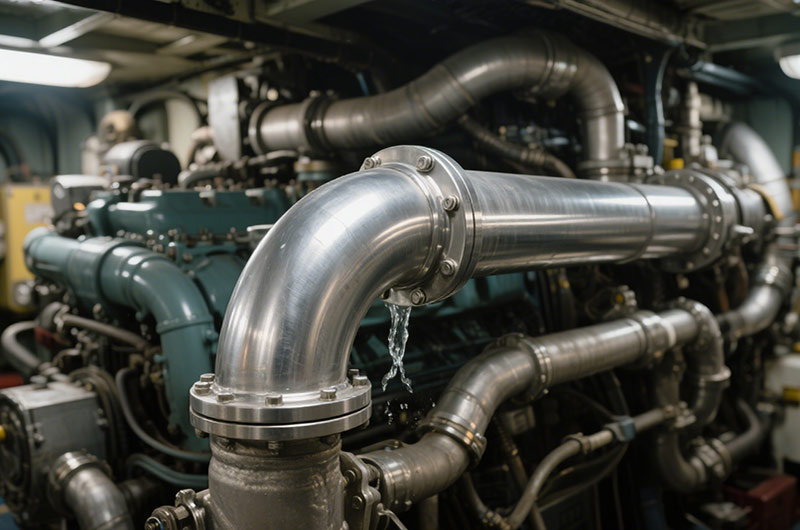
Advantages of Marine-Grade 90 Degree Aluminum Elbow
Marine-grade 90-degree aluminum elbows, with their superior material properties and diverse specifications, play an irreplaceable role in shipbuilding and marine engineering. Their main advantages include:
- Lightweight and high strength: Aluminum alloy density is about one-third that of steel, making it lightweight for easier installation and transport, while maintaining adequate strength.
- Excellent corrosion resistance: Especially 5083 aluminum alloy, which performs excellently in marine environments, resisting seawater, salt spray, and microbial corrosion.
- Good processability: Aluminum alloy is easy to machine and form, and can be manufactured into elbows of various specifications and shapes using different processes.
- Multiple connection methods: Offers welding, flange, and other connection options to meet different installation and operational requirements.
- Compliance with international standards: Certified by DNV, ABS, CCS and others, and conforms to international standards such as ASTM B241 and ASME B16.9.
Corrosion Resistance of 90 Degree Aluminum Elbow in Marine Environments
Issues to Consider for 90 Degree Aluminum Elbow in Marine Applications
- Salt spray corrosion: Marine atmospheres contain large amounts of salt particles that adhere to metal surfaces and form electrolyte solutions, accelerating electrochemical corrosion.
- Seawater corrosion: Seawater is a strong electrolyte solution containing about 3.5% salts—mainly sodium chloride, but also including sulfates, magnesium, calcium, potassium, and others.
- Microbial corrosion: Various microorganisms in marine environments form biofilms on metal surfaces, leading to microbially induced corrosion (MIC).
- Temperature variation: Marine temperatures vary widely—from tropical heat to polar cold—causing fluctuations that accelerate metal corrosion processes.
- Mechanical stress: During navigation, pipelines are subject to mechanical stresses such as vibration and impact, which can accelerate corrosion.
- Flow velocity impact: Fluid velocity affects corrosion rates—high-speed flow may erode metal surfaces and damage protective films, thus accelerating corrosion.
Corrosion Resistance Performance of Marine 90 Degree 5083 Aluminum Elbow
Due to its chemical composition and microstructural properties, 5083 aluminum alloy shows outstanding corrosion resistance in marine environments:
- Seawater corrosion rate: 5083 marine-grade aluminum plate offers excellent corrosion resistance. Its corrosion rate in seawater is very slow, with uniform corrosion rates typically between 0.025–0.05 mm/year.
- Chloride ion resistance: 5083 H321 is especially suitable for marine use, exhibiting strong resistance to chloride ions, which are a major cause of marine corrosion.
- Long-term durability: Thanks to its superior corrosion resistance, 5083 aluminum alloy helps reduce marine vessel fouling and maintenance costs, extending service life.
Corrosion Resistance Performance of Marine 90 Degree 6061 Aluminum Elbow
Compared with 5083 aluminum, 6061 alloy has slightly lower corrosion resistance, but still performs well in most marine environments:
- Moderate corrosion resistance: 6061 aluminum alloy provides good corrosion resistance, especially in high-temperature and marine environments. Though not as strong as 5083, with proper protection, it is still suitable for most ship and marine engineering uses.
- Surface treatment adaptability: 6061 aluminum is suitable for anodizing and other surface treatments. Forming an artificial oxide film can significantly improve corrosion resistance and expand its application in marine environments.
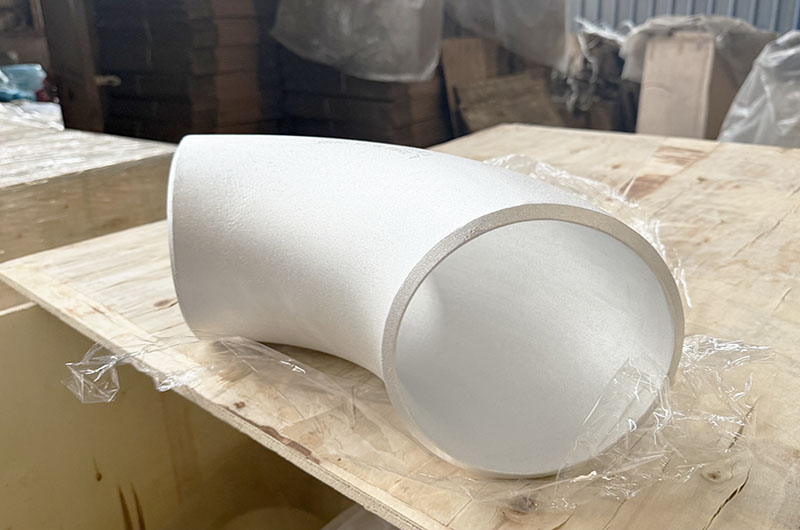
Surface Treatment Methods to Improve Corrosion Resistance
To further enhance the corrosion resistance of marine-grade 90-degree aluminum elbows, the following surface treatment methods can be applied:
- Anodizing: Creates a thick, dense oxide film on the aluminum surface through electrochemical methods, significantly enhancing corrosion and wear resistance. Typical anodized film thickness ranges from 10–25 µm; for marine use, a hard anodized film of at least 15 µm is recommended.
- Painting or coating: Applying specialized anti-corrosion coatings or powder coatings on the aluminum surface effectively isolates the metal from corrosive media. For marine use, epoxy-based or polyurethane-based coatings are typically used for their excellent salt spray and seawater resistance.
- Chemical conversion treatment: Treatments like chromate conversion or non-chrome conversion create a thin and uniform conversion coating on the aluminum surface, enhancing paint adhesion and corrosion resistance.
- Cathodic protection: For critical marine applications, cathodic protection systems—such as sacrificial anodes or impressed current systems—can be considered to slow corrosion of the aluminum elbow.
Applications of 90 Degree Aluminum Elbows in Marine Vessels
90-degree aluminum elbows are widely used in marine vessels due to the superior properties of aluminum alloys, such as lightweight, high strength, excellent corrosion resistance, and strong weldability.
Ship cooling systems
In ship cooling systems, 90-degree aluminum elbows play an important role in engine cooling systems, turbocharging systems, and seawater cooling systems. The excellent thermal conductivity of aluminum allows for efficient heat transfer, improving the efficiency of the cooling system.
Ship Ballast Water System
90-degree aluminum elbows are used in ship ballast water systems for the transportation and distribution of ballast water, helping ships adjust weight distribution and ensure safe navigation. The corrosion resistance and lightweight nature of aluminum make it an ideal choice for ballast water systems.
Ship Fuel and Lubrication Systems
In ship fuel and lubrication systems, 90-degree aluminum elbows are used in fuel piping systems and lubrication circulation systems to achieve the transportation and distribution of fuel and lubricants.
Other Ship Systems
In addition to the major systems mentioned above, 90-degree aluminum elbows are also used in ship ventilation systems, hydraulic systems, and superstructure decoration.
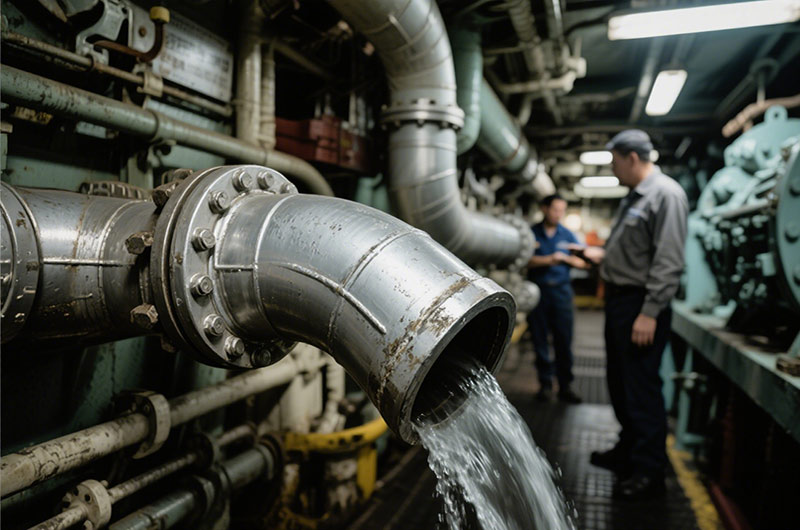
Special Requirements for Marine Aluminum Elbows
90-degree aluminum elbows used in marine vessels are typically made from marine-grade aluminum alloys such as 5083, 5052, and 6061, and are subjected to surface anodizing or painting treatments. They are also certified by classification societies such as DNV, ABS, and LR.
Marine 90 Degree Aluminum Elbow Connection Methods
Welded Connection: High Strength and Sealing
Welding is one of the most common connection methods for marine-grade 90-degree aluminum elbows.
Welding Methods
Common welding methods include Tungsten Inert Gas (TIG) welding and Metal Inert Gas (MIG) welding, both of which can provide high-quality aluminum weld joints. For critical structures, Friction Stir Welding (FSW) may also be used. This is a solid-state welding technology that avoids some of the defects associated with traditional fusion welding.
Welding Materials
Welding 5083 aluminum alloy usually involves the use of 5183 or 5356 welding wires, which have similar composition to the base material and offer good strength and corrosion resistance. Welding 6061 aluminum alloy typically uses 4043 or 5356 welding wires, where 4043 contains silicon for good flowability and ease of welding, while 5356 provides better strength and corrosion resistance.
Welding Quality Control
Weld joints for marine aluminum alloys must meet strict quality standards such as CB/T 3747-2013 and ISO 10042:2018. These standards specify requirements for weld appearance, internal defects, welding deformation, etc., to ensure that the welding quality meets the stringent requirements of marine and offshore engineering.
Welding Advantages and Disadvantages
Advantages
- High strength and sealing performance
- Low leakage risk
- Suitable for high-pressure and high-temperature environments
- Joint strength can reach over 90% of the base material
Disadvantages
- Heat-affected zones may lead to degradation of material properties
- Requires professional skills and equipment
- Joints are difficult to disassemble and repair
Flange Connection: Easy Installation and Maintenance
- Flange Types: Marine aluminum flanges come in various types including flat flanges, aluminum slip-on flanges, aluminum socket weld flanges, and aluminum butt weld flanges. Each type has its own characteristics and should be selected based on the specific application.
- Flange Advantages: Flange connections allow for easy installation and disassembly, making pipeline systems easier to maintain and repair. They also enable connections between pipes of different materials and support system expansion and modification.
- Flange Disadvantages: Flange connections require more space; sealing performance is influenced by gasket material and bolt preload; compared to welded connections, flange connections carry a higher leakage risk.
-
Aluminum Slip-On Flanges
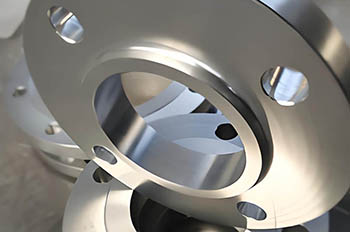
-
Aluminum Weld Neck Flanges
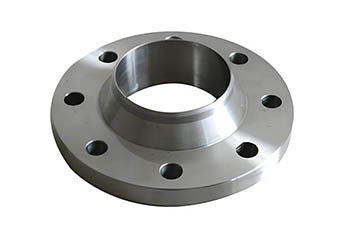
-
Aluminum Threaded Flanges
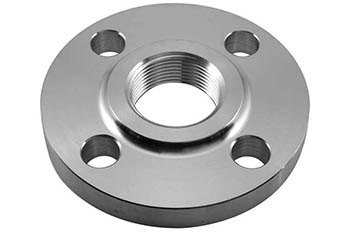
-
Aluminum Blind Flanges
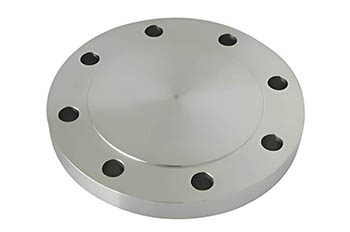
-
Aluminum Socket Weld Flanges
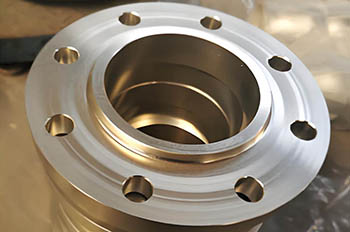
-
Aluminum Plate Flanges
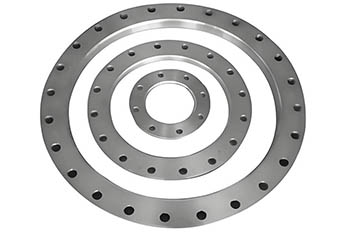
Other Connection Methods
In addition to welding and flange connections, marine-grade 90-degree aluminum elbows can also use the following connection methods:
- Socket Connection: One end of the elbow is inserted into the pipe and sealed by welding or sealing adhesive. This method is simple but requires precise control of insertion depth and sealing effectiveness.
- Threaded Connection: Threads are machined on the ends of the elbow and pipe, and the connection is made by screwing them together. Threaded connections are easy to operate but may loosen under high pressure and vibration, requiring additional sealing measures.
- Quick Connection: Specially designed quick connectors are used for rapid connection between the elbow and the pipe. This method is convenient for emergency repairs and quick replacement, but is relatively costly and may have lower sealing performance compared to welding and flange connections.
Marine 90 Degree Aluminum Elbow Selection Guide
Material Selection Guide
When selecting materials for marine-grade 90-degree aluminum elbows, the following factors should be considered:
- Environmental Conditions: Choose appropriate materials based on the level of corrosion in the operating environment. In harsh conditions with high salinity, humidity, and temperature, 5083 aluminum alloy is generally a better choice.
- Strength Requirements: Choose materials based on the system's pressure rating and mechanical load. For high-pressure and high-stress applications, 5083 aluminum alloy may be more suitable.
- Processability: Consider the manufacturing and subsequent processing needs of the elbow. 6061 aluminum alloy is easier to process and weld than 5083.
- Cost Factors: 5083 aluminum alloy is typically more expensive than 6061, so cost considerations can be made when performance requirements are met.
- Weldability: If on-site welding is required, the weldability of the material is an important factor. 6061 aluminum alloy is generally easier to weld than 5083.
Specification and Pressure Rating Selection
When selecting elbow specifications and pressure ratings, consider the following factors:
- Pipeline System Parameters: Select the appropriate elbow specification and pressure rating based on nominal diameter, working pressure, and working temperature of the pipeline system.
- Fluid Characteristics: Consider the properties of the fluid (e.g., corrosiveness, viscosity, presence of solid particles), as these will affect the material selection and specification design of the elbow.
- Installation Space: Take into account the available space at the installation site and choose the appropriate bending radius (long radius or short radius).
- System Design Life: Select appropriate materials and specifications based on the design life of the system. For critical systems in long-term use, higher-grade and more corrosion-resistant materials may be necessary.
- Regulatory Requirements: Consider relevant regulations and standards, such as classification society specifications and industry standards, to ensure that the selected elbow complies with all applicable requirements.
More Information on 90 Degree Aluminum Elbows
Common Types of Aluminum 90-Degree Elbows
Classified by Material
- 1060 Pure Aluminum Elbow made from aluminum with up to 99.6% purity, offers excellent corrosion resistance and electrical conductivity. Suitable for applications requiring high corrosion resistance but low strength.
- 6061 Aluminum Alloy Elbow a heat-treatable aluminum alloy containing magnesium and silicon, offers good strength, toughness, and corrosion resistance. One of the most commonly used aluminum elbow materials.
- 6063 Aluminum Alloy Elbow compared to 6061, has lower silicon content and slightly higher magnesium content, offering better surface treatment properties and corrosion resistance. Especially suitable for applications requiring anodizing.
- 6082 Aluminum Alloy Elbow a high-strength aluminum alloy with excellent welding and machining properties. Commonly used in applications requiring high strength and good corrosion resistance.
- 5083 Aluminum Alloy Elbow a marine-grade aluminum-magnesium alloy with excellent corrosion resistance, especially in marine environments. Commonly used in ships and offshore engineering.
- 5052 Aluminum Alloy Elbow contains about 2.5% magnesium and offers good corrosion resistance and weldability. Commonly used in medium-strength applications.
Classified by Manufacturing Process
Based on different manufacturing processes, aluminum 90-degree elbows are mainly divided into seamless elbows and welded elbows.
Classified by Bending Radius
Based on different bending radii, aluminum 90-degree elbows can be divided into long radius elbows (bending radius is 1.5 times the nominal diameter) and short radius elbows (bending radius is 1 times the nominal diameter).
Applications of 90 Degree Aluminum Elbows in Other Industries
In addition to marine vessels, aluminum 90-degree elbows are widely used in various industries. Below are several major application areas:
- Construction and HVAC Systems Used in central air conditioning, heating, ventilation systems, and architectural decoration. The lightweight nature of aluminum makes installation easier, and its thermal conductivity helps regulate air temperature.
- Automotive and Transportation Used in automotive cooling systems, intake systems, turbocharging systems, and exhaust systems. Aluminum's good thermal conductivity improves cooling efficiency, while its light weight helps reduce vehicle weight.
- Petrochemical Industry Used in chemical piping systems, petroleum refining equipment, natural gas transportation, and chemical reactors. Aluminum offers good corrosion resistance and can withstand various chemical substances.
- Food and Beverage Industry Used in food processing equipment, beverage delivery systems, and brewing equipment. Aluminum surfaces do not easily harbor bacteria and are easy to clean, meeting food hygiene standards.
- Medical Equipment Used in piping systems of medical devices, medical gas delivery, and laboratory equipment. The corrosion resistance and biocompatibility of aluminum make it ideal for medical applications.
- Other Applications Also used in aerospace, agricultural irrigation, water treatment systems, and electronic devices, demonstrating the versatility and adaptability of aluminum elbows.
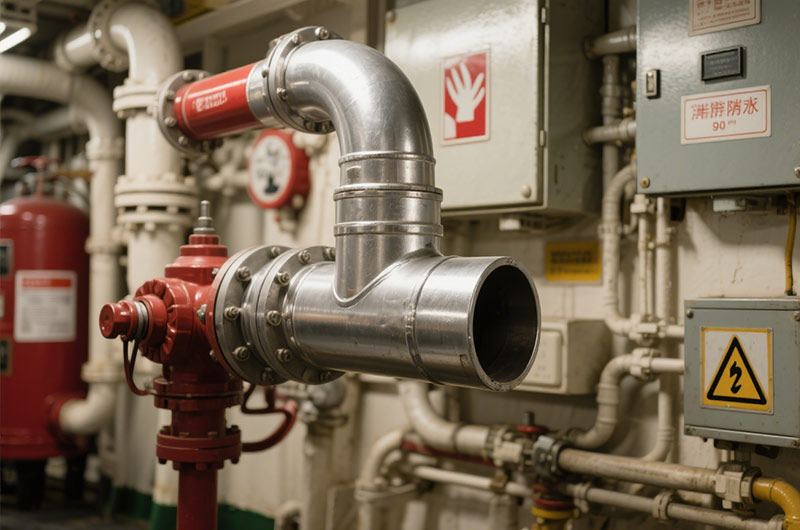
Performance Indicators of 90 Degree Aluminum Elbows
The performance indicators of aluminum 90-degree elbows directly affect their suitability and reliability in various applications. Below are several key performance indicators:
Corrosion Resistance
Aluminum forms a dense oxide film in the air, effectively preventing oxygen, moisture, and other corrosive media from attacking the metal. Especially marine-grade aluminum alloys like 5083 and 5052 exhibit excellent corrosion resistance in seawater. High-quality aluminum elbows can typically pass over 500 hours of salt spray testing.
Pressure Resistance
The pressure resistance of aluminum 90-degree elbows depends on the material, wall thickness, and manufacturing process. Different aluminum alloys have different strengths—for example, 7075-T6 has a yield strength up to 505 MPa, while 6061-T6 has a yield strength around 276 MPa. Based on calculations, a 7075-T6 aluminum elbow with 32 mm outer diameter and 3 mm wall thickness can withstand a maximum allowable pressure of about 39.8 MPa.
Temperature Range
The typical working temperature range for aluminum elbows is -30°C to +80°C. Aluminum's strength decreases at high temperatures, so for high-temperature applications, special aluminum alloys or heat treatments are required. Aluminum maintains good toughness and strength at low temperatures, making it suitable for freezing and low-temperature environments.
Mechanical Properties
6061-T6 aluminum alloy has a tensile strength of about 236 MPa; 7075-T6 can reach up to 505 MPa. Aluminum has an elastic modulus of approximately 72.4 GPa, which determines its deformation characteristics under load. Hardness also varies: 6061-T6 has about 95 HB, and 7075-T6 can reach 150 HB.
Other Performance Indicators
Lightweight, good thermal conductivity, excellent machinability, recyclability, and good sealing performance.
90 Degree Aluminum Elbow Size Chart
| Outside | Center Line Radius | Wall Thickness |
| 3/4" (19mm) Aluminum 90 Degree Elbow | 2" | 0.065" (1.65mm) |
| 1" (25mm) Aluminum 90 Degree Elbow | 1-1/2" | 0.065" (1.65mm) |
| 1" (25mm) Aluminum 90 Degree Elbow | 2" | 0.065" (1.65mm) |
| 1" (25mm) Aluminum 90 Degree Elbow | 3" | 0.065" (1.65mm) |
| 1" (25mm) Aluminum 90 Degree Elbow | 4" | 0.065" (1.65mm) |
| 1-1/8" (28mm) Aluminum 90 Degree Elbow | 2" | 0.065" (1.65mm) |
| 1-1/4" (32mm) Aluminum 90 Degree Elbow | 2" | 0.065" (1.65mm) |
| 1-3/8" (35mm) Aluminum 90 Degree Elbow | 1-3/4" | 0.065" (1.65mm) |
| 1-3/8" (35mm) Aluminum 90 Degree Elbow | 2-1/2" | 0.065" (1.65mm) |
| 1-1/2" (38mm) Aluminum 90 Degree Elbow | 2" | 0.065" (1.65mm) |
| 1-1/2" (38mm) Aluminum 90 Degree Elbow | 3" | 0.065" (1.65mm) |
| 1-5/8" (41mm) Aluminum 90 Degree Elbow | 2" | 0.065" (1.65mm) |
| 1-3/4" (45mm) Aluminum 90 Degree Elbow | 2" | 0.065" (1.65mm) |
| 1-7/8" (48mm) Aluminum 90 Degree Elbow | 2-1/4" | 0.065" (1.65mm) |
| 2" (51mm) Aluminum 90 Degree Elbow | 2" | 0.065" (1.65mm) |
| 2" (51mm) Aluminum 90 Degree Elbow | 3-1/8" | 0.065" (1.65mm) |
| 2-1/4" (57mm) Aluminum 90 Degree Elbow | 2-1/4" | 0.065" (1.65mm) |
| 2-1/4" (57mm) Aluminum 90 Degree Elbow | 3" | 0.065" (1.65mm) |
| 2 3/8" (60mm) Aluminum 90 Degree Elbow | 3-1/8" | 0.065" (1.65mm) |
| 2-1/2" (63mm) Aluminum 90 Degree Elbow | 2-1/2" | 0.065" (1.65mm) |
| 2-1/2" (63mm) Aluminum 90 Degree Elbow | 4" | 0.065" (1.65mm) |
| 2-3/4" (70mm) Aluminum 90 Degree Elbow | 2-3/4" | 0.065" (1.65mm) |
| 2-3/4" (70mm) Aluminum 90 Degree Elbow | 4-5/16" | 0.065" (1.65mm) |
| 3" (76mm) Aluminum 90 Degree Elbow | 3" | 0.065" (1.65mm) |
| 3" (76mm) Aluminum 90 Degree Elbow | 4-3/4" | 0.065" (1.65mm) |
| 3-1/4" (83mm) Aluminum 90 Degree Elbow | 3-1/2" | 0.065" (1.65mm) |
| 3-1/2" (89mm) Aluminum 90 Degree Elbow | 3-1/2" | 2mm |
| 3-1/2" (89mm) Aluminum 90 Degree Elbow | 5-5/8" | 2mm |
| 4" (102mm) Aluminum 90 Degree Elbow | 4" | 2mm |
| 4" (102mm) Aluminum 90 Degree Elbow | 5-1/2" | 2mm |
| 4-1/2" (114mm) Aluminum 90 Degree Elbow | 6" | 2mm |
| 5" (127mm) Aluminum 90 Degree Elbow | 7-1/2" | 2.5mm |
Recommended for you
-
We offer marine-grade 45-degree aluminum elbows in a range of standard sizes including 2 inch, 3 inch, 4 inch, 5 inch, 6 inch, along with customized options such as Cast Aluminum 45 Degree Elbow.
-
As a trusted aluminum fittings supplier, HC Aluminum offers a wide range of 4 Aluminum Elbow options in mainstream specifications, commonly including 45°, 90°, and 180°.
